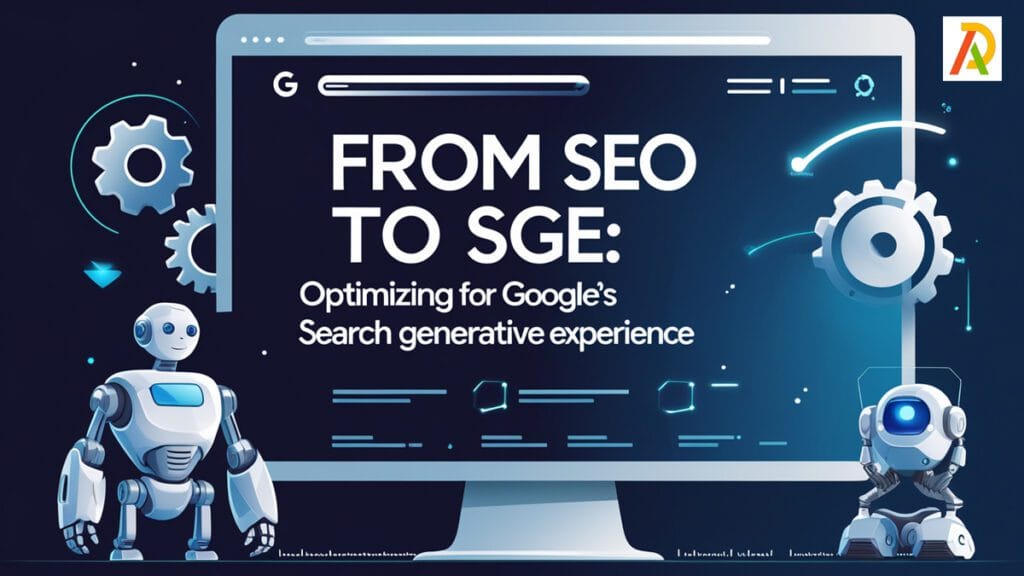From SEO to SGE: Optimizing for Google’s Search Generative Experience

People search online differently than they used to and the speed of knowledge acquisition is faster than ever. This is especially true with Google’s latest effort with the Search Generative Experience (SGE). There is a clear shift in how information is delivered. Rather than simply links to resources, the search experience is presenting answers generated by AI, designed to summarize relevant insights on a topic – directly, essentially, at the top of the page.
This indicates the beginning of a trend affecting how content is discovered, consumed and ranked as a result. For businesses, marketers and content developers, we see a need to rethink how we will think about visibility. It is now clear that traditional SEO, if there is such a thing, is not the end but the beginning of a more complex, adaptive approach.
If you want to be competitive in this space, you may find that a trusted SEO course is a natural progression. The basics of best practices still matter, but understanding how content conversation will fit into AI-generated efforts is equally important.
What is Google’s Search Generative Experience (SGE)?
Google’s Search Generative Experience or SGE is an AI-enhanced redesign altering how results are presented when a person types a query. Google doesn’t just serve up links like it has always done but provides a short-generated summary outlining key points that it has extracted from several sources across the internet. The intention is to provide users with a faster, more comprehensive answer without the need for clicking through numerous websites.
The AI summaries display first, with suggested follow-up questions directly below, which users can select for additional exploration. It feels much less like searching and much more like having a conversation. Although the information comes from live websites, it has been processed, filtered, and rewritten by Google’s AI into a single block of content that is easy to read.
This update ushers in a significant shift for how search works. Searchers may find the information they want and never even visit the source. There’s a risk of traditional thinking for websites, blogs, and businesses: this is both a threat and an opportunity. If the content is well-structured, easy to read, and valuable, it is more likely that the information is part of the summaries. On the other hand, there is also a chance that it could just be excluded altogether.
SGE is not just a change in the look of search, it is also signifying the future of searching. Information is getting shorter, better, and faster than ever. Those who create content now must consider how that same content will be consumed not just by the searcher, but, by AI as well.
Key Differences: Traditional SEO vs SGE
The nature of how search engines return results is being redefined. Throughout the history of SEO, the primary concerns were optimizing for keywords, rankings, and clicks. With Google’s Search Generative Experience (SGE), everything has changed. The process of user intent is being processed by AI and direct context-based answers are being put in the SERP right at the top, often, for users, before they even click.
Here’s how the change looks in practice:

Under the traditional model, the search engine results page (SERP) was a list of links, and the goal was simple: get to the top and attract clicks. SGE, however, changes the layout entirely. As a result, AI-generated summaries appear at the top of most organic results, meaning some users may not need to click to content beyond the initial search they see.
This evolution means that content marketers need to think differently about SEO now. The outcome and success will now hinge on how distinctly and meaningfully your content answers a user query, and ultimately, how distinctly your content stands out in an AI-curated experience.
How SGE Impacts Content Discovery
SGE is changing how users interact with search results. The traditional list of blue links is no longer the main focus. Instead, Google now places a generated “snapshot” at the top, an AI-created summary that pulls key information from various sources. This means that users frequently do not have to click into specific websites to get what they want.
Content that is featured in these snapshots tends to be associated with very specific types of queries. Google’s AI is more likely to feature pages that answer conversational questions, include niche or long-tail search terms, or involve details to answer research-based questions. Easily repeatable or shallow content is much less likely to be featured.
Another change is the increasing value of original content. Pages that generate first-party data, demonstrate subject-matter expertise, and express a unique view point are more distinguishable. In their ranking systems, Google has also increased weight on credibility signals – and specifically on EEAT (Experience, Expertise, Authoritativeness, and Trustworthiness).
For sites that rely heavily on aggregated or repurposed content, this presents a real challenge. Without strong authority or value, their chances of appearing in AI-driven results are significantly reduced.
Strategies to Optimize for SGE
SGE is redefining what it means to “rank” on Google. Instead of vying for a slot on a list of links, content is fighting for space within AI-generated responses. In short, web pages need to stop wasting time with technical hacks like page speed or word counts and start focusing on clarity, trust, and relevance. Here’s how to do it.
1. Go Deep not Wide
Content shouldn’t just answer one question. A good page should include related questions, common follow-ups, and other contextual details to help the reader get the broadest picture possible. Think less about keyword stuffing and more about solving the problem from all angles. The more value your page has, the more signals Google can have to include it in a snapshot.
2. Build Real Credibility
SGE looks for sources that feel trustworthy. That means showing who’s behind the content. Use proper author names, include bios if possible, and link to credentials. Outdated pages hurt trust, update them regularly to keep information accurate. Credibility isn’t just a nice-to-have anymore. It’s a ranking factor.
3. Clean Up Your Format
If you have long paragraphs and lots of different formatting shapes and sizes, you’re really not helping anyone. Break-up your text with subheadings, bullets, summary lists, and FAQs when they make sense. The simpler you make it for the user, the more you’ll help Google’s AI slice together the meaningful pieces of your page into its summary.
4. Answer Like You Mean It
If someone asks a direct question, don’t bury the answer. Say it early, say it clearly. Avoid fluff. Definitions, steps, or lists all help here. This isn’t about being clever, it’s about being helpful.
5. Add Schema Markup
Structured data tells Google what your page is about. Use FAQ, Article, or How-To schema where it fits. It’s not about gaming the system, it’s about giving Google the right context so your content can show up where it matters.
Tools & Resources for SGE Optimization
• Google Search Console:
Still relevant. You can pay attention to keyword performance, see which pages get impressions, and notice drops in visibility with the inclusion of more SGE results.
• AlsoAsked, AnswerThePublic:
These tools help identify real user queries. They are nice for finding long-tail questions, and building content around what people are actually looking for.
• Schema.org tools:
These are used to add structured data to your pages. Look at the FAQ, How-To, or Article markup. The structured data makes it easier for Google to extract whole and specific pieces of information quickly when creating AI summaries.
• Surfer SEO, Frase:
Both of these are great for checking the depth of topics, and for finding missing related themes in your content. They are not substitutes for doing research, but they do help make research easier to do.
• Google’s SGE Developer Guide:
Google’s own documentation on the details of SGE. Keep this handy. It’s the most accurate conveyance of all the new updates and suggestions.
Conclusion: From Search Ranking to AI Relevance
Search is not just about ranking ahead of the competition, it’s about being useful. With SGE, Google isn’t ranking content the same way it used to. Instead, it’s gathering insights, generating summaries, and putting valuable information front stage. This has changed the focus from pages that are keyword heavy, to which pages are clear, trust-worthy, and truly useful.
What is important now is quality. The type of sites that will accrue credibility, detail, and valuable quality will probably be the ones summarized in AI space. This isn’t a race to be first, it’s a race to be the best.
This shift is important for anyone in content, business, or marketing. Even learners exploring options like a digital marketing course in Mumbai now need to understand how AI is changing the rules of visibility. In the world of SGE, value wins over volume, every time.
Author Bio:
Nikita is a digital marketing professional at BIA. With a passion for emerging industry trends, she enjoys crafting strategies that resonate—and unwinds by diving into fiction novels during her downtime.


